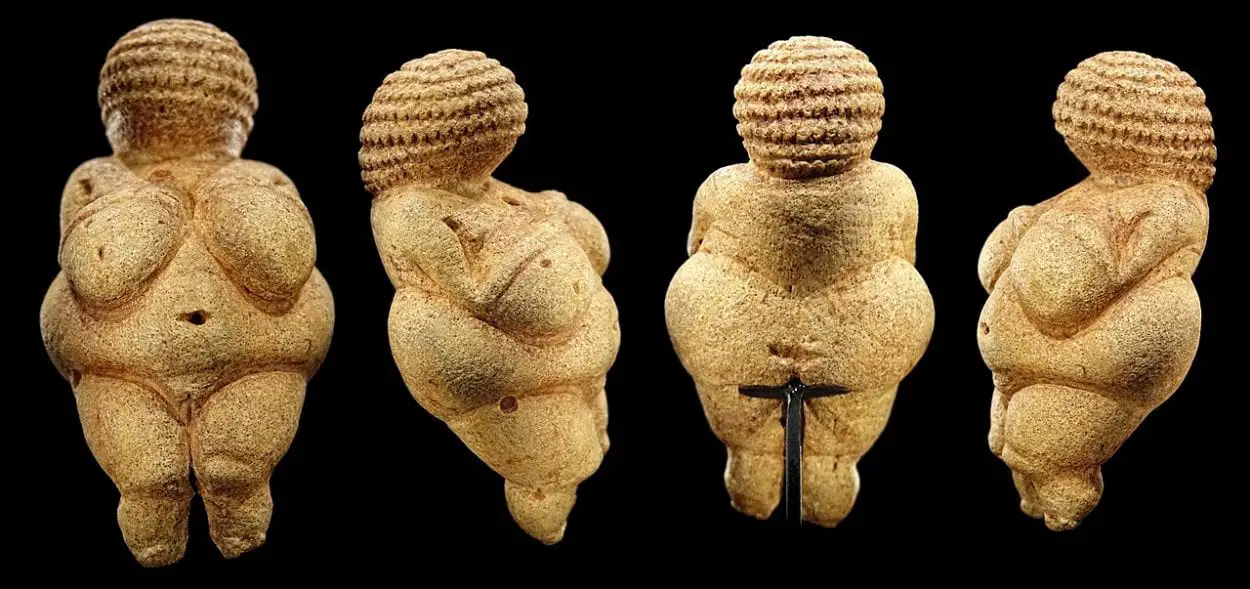One of world’s earliest examples of art, the enigmatic `Venus’ figurines carved some 30,000 years ago, have intrigued and puzzled scientists for nearly two centuries.
Now a researcher from the University of Colorado Anschutz Medical Campus believes he’s gathered enough evidence to solve the mystery behind these curious totems.
The hand-held depictions of obese or pregnant women, which appear in most art history books, were long seen as symbols of fertility or beauty. But according to Richard Johnson, MD, lead author of the study published today in the journal, Obesity, the key to understanding the statues lays in climate change and diet.
“Some of the earliest art in the world are these mysterious figurines of overweight women from the time of hunter gatherers in Ice Age Europe where you would not expect to see obesity at all,” said Johnson, a professor at the University of Colorado School of Medicine specializing in renal disease and hypertension. “We show that these figurines correlate to times of extreme nutritional stress.”
Early modern humans entered Europe during a warming period about 48,000 years ago. Known as Aurignacians, they hunted reindeer, horses and mammoths with bone-tipped spears. In summer they dined on berries, fish, nuts and plants. But then, as now, the climate did not remain static.
As temperatures dropped, ice sheets advanced and disaster set in. During the coldest months, temperatures plunged to 10-15 degrees Celsius. Some bands of hunter gatherers died out, others moved south, some sought refuge in forests. Big game was overhunted.
It was during these desperate times that the obese figurines appeared. They ranged between 6 and 16 centimeters in length and were made of stone, ivory, horn or occasionally clay. Some were threaded and worn as amulets.
Johnson and his co-authors, Professor (ret.) of Anthropology John Fox, PhD, of the American University of Sharjah in the United Arab Emirates, and Associate Professor of Medicine Miguel Lanaspa-Garcia, PhD, of the CU School of Medicine, measured the statues’ waist-to-hip and waist-to-shoulder ratios. They discovered that those found closest to the glaciers were the most obese compared to those located further away. They believe the figurines represented an idealized body type for these difficult living conditions.
“We propose they conveyed ideals of body size for young women, and especially those who lived in proximity to glaciers,” said Johnson, who in addition to being a physician has an undergraduate degree in anthropology. “We found that body size proportions were highest when the glaciers were advancing, whereas obesity decreased when the climate warmed and glaciers retreated.”
Obesity, according to the researchers, became a desired condition. An obese female in times of scarcity could carry a child through pregnancy better than one suffering malnutrition. So the figurines may have been imbued with a spiritual meaning – a fetish or magical charm of sorts that could protect a woman through pregnancy, birth and nursing.
Many of the figurines are well-worn, indicating that they were heirlooms passed down from mother to daughter through generations. Women entering puberty or in the early stages of pregnancy may have been given them in the hopes of imparting the desired body mass to ensure a successful birth.
“Increased fat would provide a source of energy during gestation through the weaning of the baby and as well as much needed insulation,” the authors said.
Promoting obesity, said Johnson, ensured that the band would carry on for another generation in these most precarious of climatic conditions.
“The figurines emerged as an ideological tool to help improve fertility and survival of the mother and newborns,” Johnson said. “The aesthetics of art thus had a significant function in emphasizing health and survival to accommodate increasingly austere climatic conditions.”
The team’s success in amassing evidence to support its theory came from applying measurements and medical science to archaeological data and behavioral models of anthropology.
“These kinds of interdisciplinary approaches are gaining momentum in the sciences and hold great promise,” Johnson said. “Our team has other subjects of Ice Age art and migration in its research sights as well.”
Header Image Credit : Bjørn Christian Tørrissen





